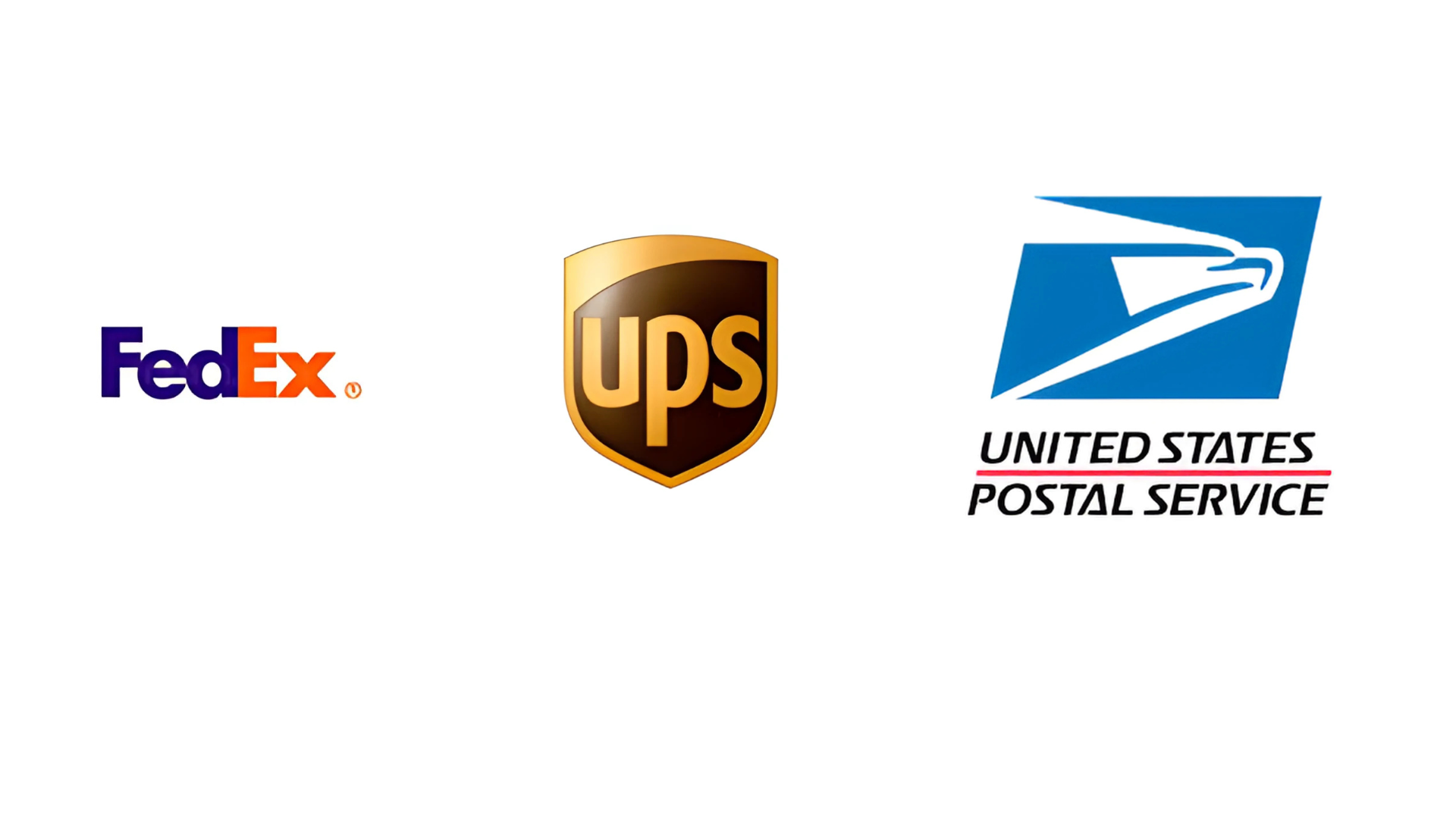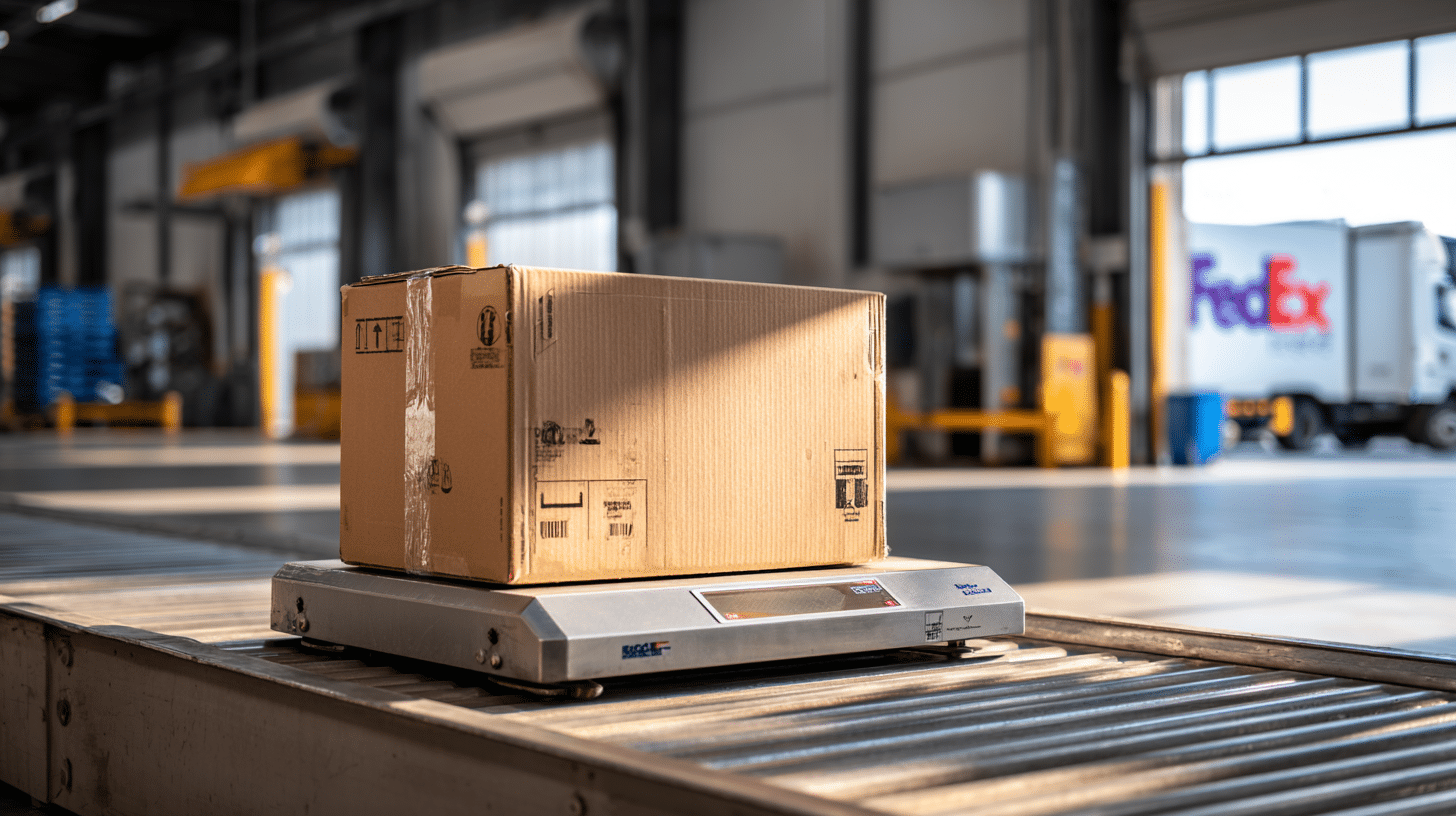Finding out the cheapest way to ship 50 lbs can be confusing, especially since carriers like FedEx, UPS, and USPS each use different pricing models.
What looks affordable at first glance may climb once fuel fees, residential surcharges, or insurance are added. That’s why understanding how weight, box size, distance, and delivery speed affect final costs is so important.
I’ll break down the main options from FedEx Ground and UPS Simple Rate to USPS and popular third-party platforms like Pirate Ship or Easyship, so you can clearly compare them.
You’ll learn what each service offers, how much you can expect to pay, and smart strategies to reduce expenses. By the end, there will be a clear plan for shipping heavy packages without overspending.
How Carriers Calculate Shipping Costs
When shipping companies set prices, they don’t just look at how heavy your box is. They use a mix of three main factors:
- Weight: This is the actual scale weight of your package. A 50 lb box usually falls into the “heavy” category for most carriers, which often triggers higher base rates. If you’ve ever wondered how much to ship 50 lbs USPS, you’ll notice costs rise quickly once a package crosses certain weight thresholds.
- Dimensions: The size of your box matters because of something called dimensional (DIM) weight. If your box is bulky but light, carriers still charge you as if it were heavier to account for the space it takes up on trucks or planes.
- Distance: Carriers divide the U.S. into shipping zones. A 50 lb package sent across the country will cost much more than the same package going one state over.
Carriers use these factors in a pricing formula, then add surcharges (fuel, residential delivery, oversized package fees). That’s why comparing services and platforms is so important; a few tips can save you a lot.
Cheapest Way to Ship 50 lbs
Shipping for packages can be done through direct shipping services, aggregators & freight services. Each option works differently and offers unique benefits.
Direct Shipping Services

When shipping a 50 lb package, the cheapest option depends on distance, package size, and the carrier’s pricing structure. Below are the main carriers with their estimated rates and best use cases.
1. USPS Ground
- Ships packages up to 70 lbs.
- Delivery time: 2–5 business days.
- Often the cheapest for short or regional deliveries.
- No residential surcharges.
- Dimensional weight may increase costs for large boxes.
- If you’re wondering how much to ship 50 lbs USPS, Ground rates are fairly competitive, about $38 for short distances and $65 for cross-country shipments.
- Estimated Price (50 lbs): ~$38 short distance, ~$65 cross-country.
2. UPS Ground
- Handles packages up to 150 lbs.
- Delivery time: 1–5 business days.
- Adds an additional handling fee once packages reach 50 lbs.
- Strong tracking and reliable service.
- Costs can be reduced with business accounts or platforms like Pirate Ship.
- Estimated Price (50 lbs): ~$42 short distance, ~$72 cross-country (plus ~$28 handling fee).
3. FedEx Ground
- Ships packages up to 150 lbs.
- Delivery time: 1–5 business days.
- Competitive for long-distance shipping.
- Flat-rate option available (~$47 if the package fits in their box).
- Adds handling fees for packages over 50 lbs.
- Estimated Price (50 lbs): ~$41 short distance, ~$70 cross-country.
4. Flat-Rate Boxes
- Fixed cost regardless of weight or distance.
- Best for compact, heavy items like books, tools, or machinery parts.
- Saves money on long-distance shipments.
- Limited by box size; bulky 50 lb packages won’t qualify.
- Estimated Price (50 lbs in flat-rate box): ~$47–$50, if the item fits.
For short distances, USPS Ground Advantage is usually the cheapest choice. For long-distance shipments, FedEx flat-rate boxes offer the best value if your package fits.
UPS and FedEx Ground are reliable alternatives, but handling fees at 50 lbs can make them more expensive unless you have access to discounted rates.
Aggregators & Freight Services

Online aggregators and freight providers help cut costs by giving access to bulk-discounted carrier rates or by consolidating heavy shipments. These platforms are especially useful for packages around 50 lbs or multiple heavy boxes.
1. Pirate Ship
Pirate Ship gives access to USPS Commercial and discounted UPS rates with no monthly fees. It’s simple to use and often 10–20% cheaper than booking directly.
The platform also includes features like address validation and free thermal label printing. Small businesses especially like it because it’s easy to set up and saves money right away.
2. Easyship
Easyship compares dozens of carriers and highlights the cheapest or fastest options for each package. It’s especially useful for international shipping, often saving 15–30%.
Users also get upfront visibility on taxes and duties, which avoids surprise fees at delivery. With built-in integrations for e-commerce stores, it’s a strong choice for online sellers.
3. Parcel Monkey
Parcel Monkey is an aggregator that lowers costs for heavy or international shipments by consolidating space with other deliveries. Savings range from 20–60% depending on size and route.
Aggregators like Pirate Ship and Easyship are best for individuals or small businesses looking for instant savings on single shipments.
4. Freight Services (Consolidation & Pallet Shipping)
Freight is cost-effective for multiple heavy boxes or oversized packages. Consolidating shipments or placing boxes on a pallet usually costs $150–$250, less than sending each box individually.
Example: TSI Shipping – TSI provides freight options for single 50 lb boxes or pallets of several boxes. Their consolidation approach lowers the per-box cost, making them suitable for long-distance or bulk deliveries.
Aggregators like Pirate Ship and Easyship are best for individuals or small businesses looking for instant savings on single shipments. Freight services, on the other hand, make sense when moving multiple 50 lb boxes or oversized items where parcel carriers become too costly.
Real Cost Comparisons
The cost to ship a 50 lb package depends heavily on the carrier and the distance. This table includes information for short-haul and long-haul domestic shipments.
| Carrier & Service | Short Distance (Same Region) | Cross-Country (Long Distance) | Delivery Speed | Notes |
|---|---|---|---|---|
| USPS Ground Advantage | ~$38 | ~$65 | 2–5 business days | Cheapest for short/regional, limited for oversized boxes |
| UPS Ground | ~$42 | ~$72 (plus $28 handling fee) | 1–5 business days | Reliable tracking, handling fees apply at 50 lbs |
| FedEx Ground | ~$41 | ~$70 (flat-rate: ~$47 if it fits) | 1–5 business days | Flat-rate saves on compact heavy items, good for long distances |
| Freight (via TSI/Parcel Monkey) | $150+ (pallet) | $200–$250 (pallet) | 3–7 business days | Best for multiple boxes or oversized loads |
These comparisons show that USPS is usually cheapest for regional shipping, FedEx flat-rate boxes can be the best for long-distance shipping if the package fits, and freight services are most practical for bulk or oversized shipments.
Cost-Saving Tips for Shipping 50lbs Packages
Even with heavy shipments, a few smart strategies can significantly cut shipping costs.
- Use the smallest box that fits: A smaller box lowers the chance of paying extra for dimensional weight. Pack tightly to avoid wasted space.
- Compare rates across carriers: Prices vary between FedEx, UPS, and USPS, and they can change day to day. Checking all options helps you find the cheapest one.
- Ship to business addresses: Sending to a commercial location usually costs less than shipping to a home, since it avoids residential surcharges.
- Leverage third-party discounts: Services like Pirate Ship and Easyship offer reduced rates that can save 10–30% compared to retail prices.
- Consolidate multiple shipments: If you’re sending several 50 lbs boxes, consider freight shipping. Grouping them into one larger shipment can cost less than sending each box separately.
Hidden Costs to Watch Out
Even when a base rate looks cheap, extra fees can quickly raise the total shipping cost. Here are the most common ones to keep in mind:
1. Fuel surcharges
Carriers often add a fuel fee on top of the base rate. For a 50 lb FedEx Ground package, this can be $4–$8 extra, depending on fuel prices and distance.
Always check the final quote, not just the base rate shown in calculators.
2. Residential delivery fees
Shipping to a home usually costs more than shipping to a business. UPS and FedEx add around $4–$6 per package for residential delivery.
If you can ship to a commercial address (like a workplace), you may save that fee.
3. Oversized package penalties
Even if a box is under 50 lbs, carriers charge extra if it’s too big. For example, a 50 lb box measuring 30x30x30 inches could add an oversize fee of $15–$25.
Keeping packaging compact reduces this risk.
4. Insurance add-ons
Adding insurance protects your shipment but increases the cost. USPS charges about $2.45 for the first $100 of value, and rates go up as the declared value rises.
For a $500 insured package, you might add $8–$10 to the total.
Conclusion
Shipping a 50 lb package doesn’t have to drain your budget. The cheapest option depends on distance, speed, and whether the item fits into a flat-rate box.
USPS Ground Advantage is usually best for short hauls, FedEx Ground flat-rate boxes can win for longer routes, and freight services make sense for multiple heavy boxes.
If you’ve been asking how much to ship 50 lbs USPS, the answer is that costs vary, but USPS Ground typically stays competitive compared to private carriers.
After comparing the choices, I have found that planning prior and choosing the right service is the key to shipping heavy packages without overspending.
Always compare rates, use the smallest suitable box, and research the different options available.
Frequently Asked Questions
Do carriers offer free pickup for heavy packages?
USPS offers free scheduled pickups for most services, including heavy boxes, though weight limits may vary locally. UPS and FedEx also offer pickups, but may charge a fee unless you have a business account with regular shipments.
Is there a way to avoid residential surcharges?
Yes. Ship to a commercial address, UPS Access Point, or FedEx Hold Location instead of a home address. This can save $4–$6 per package.
What if my package is irregularly shaped (like a tube or cylinder)?
Carriers charge additional handling fees for non-standard shapes. Cylinders, tubes, or packages that can’t be stacked on a conveyor belt often add $15–$25 to the cost.















